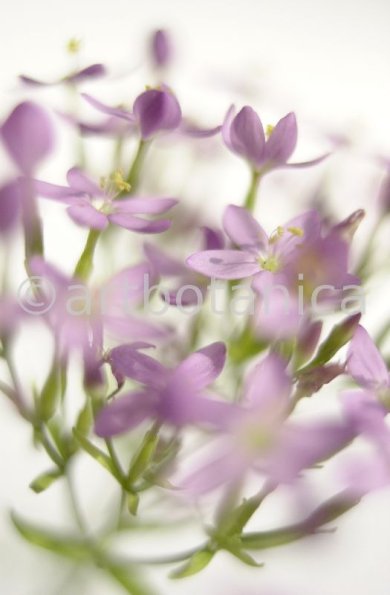
Die bis zu 50 cm hoch wachsende, zweijährige Pflanze ist in ganz Europa heimisch und bildet mehrere Unterarten. Im ersten Jahr erscheint eine grundständige Blatt-rosette, erst im zweiten Jahr bildet sich ein aufrechter, oberwärts verzweigter, blütentragender Stängel. Die hellrosa bis roten, selten weißen Blüten bilden eine Trugdolde.
Medizinisch verwendet wird das rasch getrocknete, blühende Kraut. Seine verdauungsfördernde Wirkung und die damit verbundene Stärkung ist so ausgeprägt, dass das Tausendgüldenkraut zu den ganz besonders wertgeschätzten Heilpflanzen gehört. Centaurium erythraea is a species of flowering plant in the gentian family known by the common names common centaury and European centaury. This is an erect biennial herb which reaches half a meter in height. It grows from a small basal rosette and bolts a leafy, erect stem which may branch. The triangular leaves are arranged oppositely on the stem and the erect inflorescences emerge from the stem and grow parallel to it, sometimes tangling with the foliage. Each inflorescence may contain many flowers. The petite flower is pinkish-lavender and about a centimeter across, flat-faced with yellow anthers. The fruit is a cylindrical capsule. It is one of the Bach Flower Remedies.
